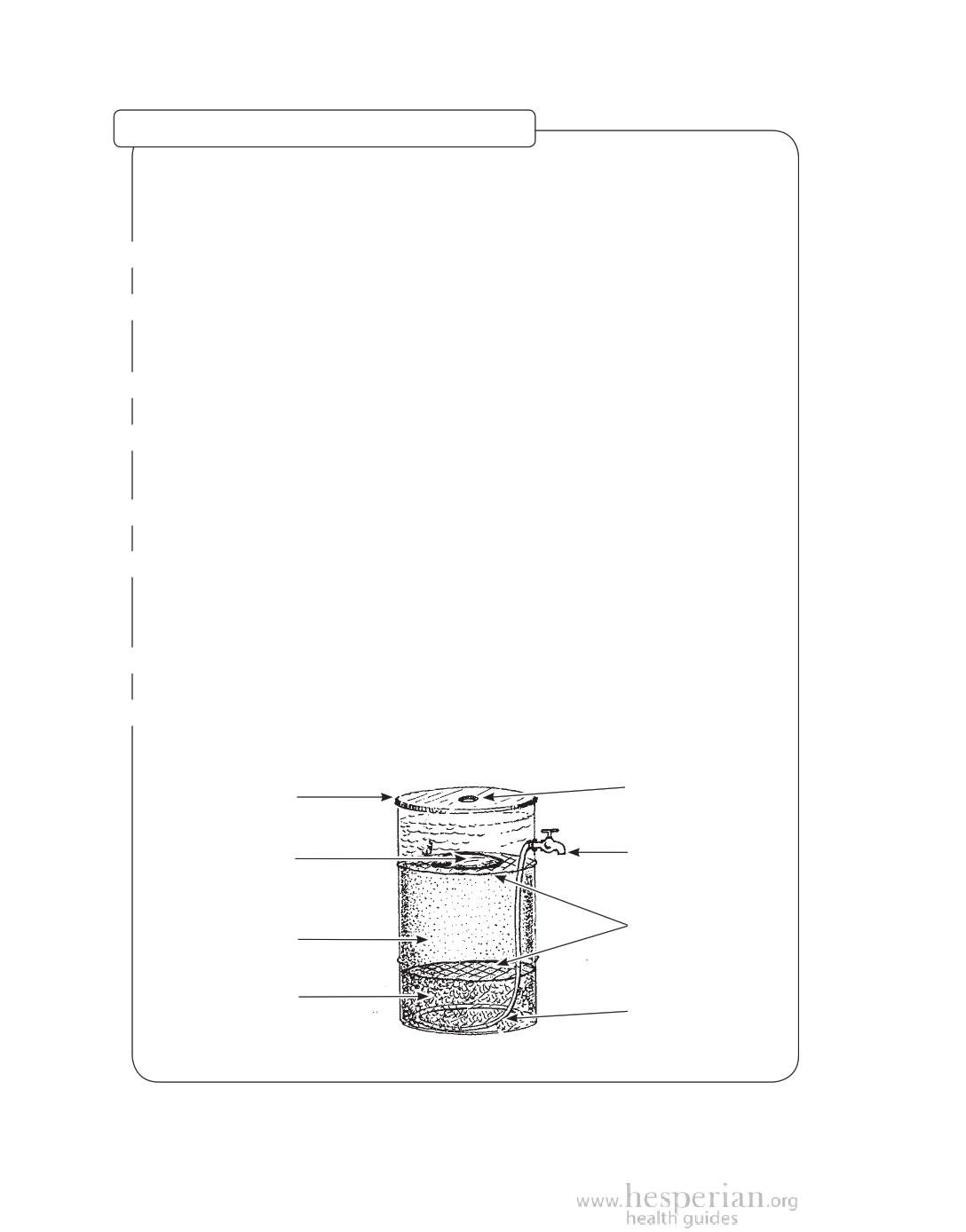
96 Protec ting Communit y Water
Howbtconbmxnackbe a household slow sand filter
This is one of the safest, most effective, and cheapest ways to filter water for a
household. This filter can treat enough water for a small family (at least 50 liters
per day).
➊ Clean a watertight 200 liter container and disinfect it with bleaching powder. Make
sure the container did not contain toxic materials.
➋ Drill a hole ¼ to ⅓ of the way down from the top of the container for the valve or
tap. The hole should be sized for the fitting on the tap. (For example, if the tap has
a 12 mm fitting, the hole should be 12 mm wide.)
➌ Fit the tap to the hole and fix it in place with hard-setting putty. If a brick container
is used, the valve can be cemented within the wall.
➍ Prepare the flexible water collecting pipe. Drill or punch many small holes in the
first 35 cm of the hosepipe, seal the end, and form it into a ring on the bottom of
the container with the holes facing downward.
➎ Connect the top of the hosepipe (the end with no holes) to the tap. Seal the pipe
fittings with hose clamps or wire.
➏ Place a layer of clean gravel 7 cm deep on the bottom of the barrel to cover the
water-collecting pipe. Cover the gravel with fine cloth and fill the barrel with clean
river sand to about 10 cm below the tap. Then cover the sand with a second
fine cloth.
➐ Make a cover for the container, with a hole in it to pour water through. Place a flat
rock or dish under the hole to prevent disturbing the sand when water is poured in.
➑ Flush the filter with water. Once the filter is cleaned, it is ready to use.
Cover
200 liter container
Pour water in here
Flat
stone
Tap
Washed
sand
Washed
gravel
Fine cloth
20 mm
flexible pipe
A Community Guide to Environmental Health 2012